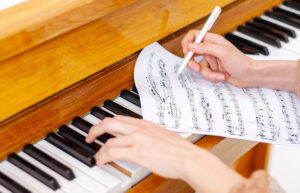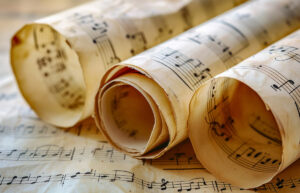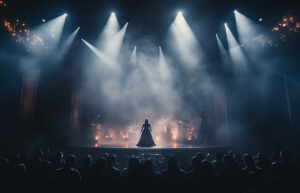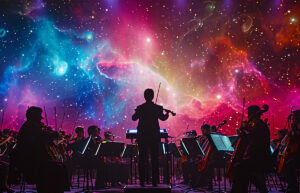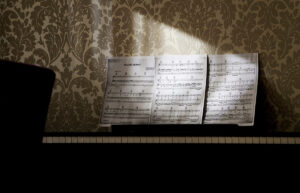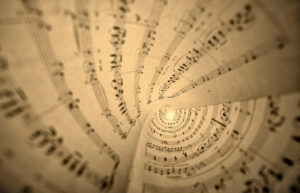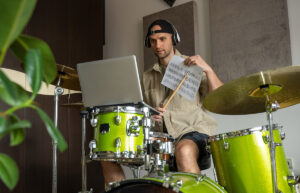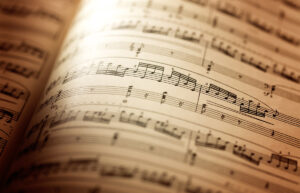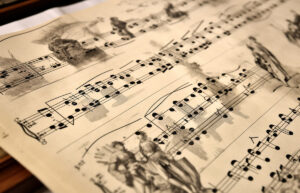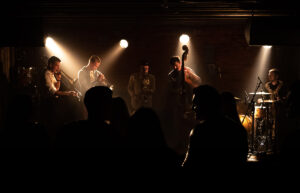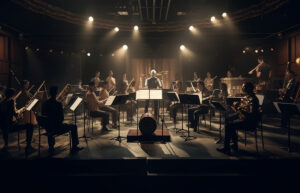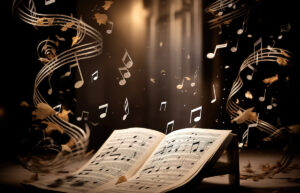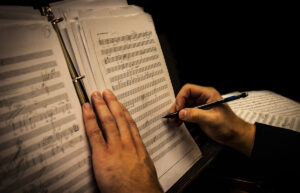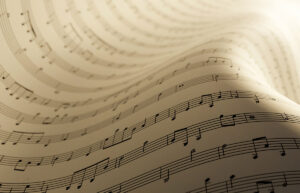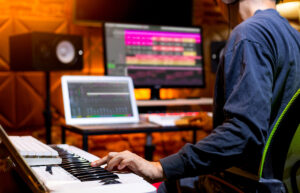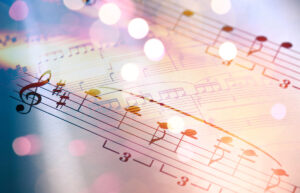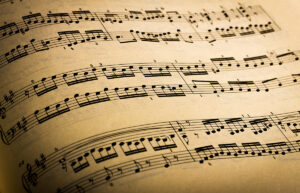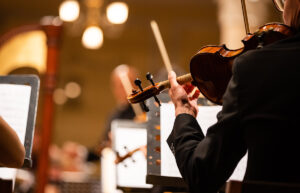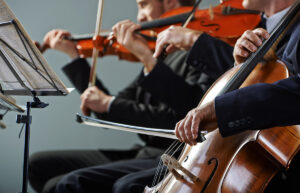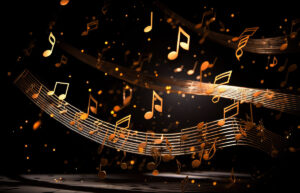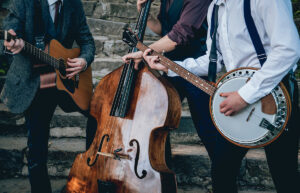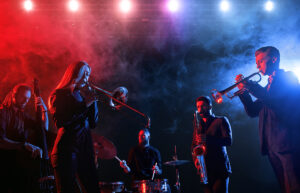Different Types of Singing Styles

Singing is a universal language that transcends cultural boundaries and connects people through melody, rhythm, and emotion. Are you a music enthusiast or aspiring vocalist looking to discover your unique singing style? We’ve got you covered.
This comprehensive guide provides a thorough understanding of different types of singing styles and emphasizes the importance of selecting the appropriate genre for a successful vocal career. Understanding these styles can help aspiring singers and music enthusiasts improve their music appreciation.
Welcome to TheDemoStop, now join the community!
Connect with artists, fans and producers around the world.
List of Different Types of Singing Styles
1: Pop
Pop music is a genre that appeals to a broad audience with short, catchy songs and straightforward musical arrangements. This style emerged in the late 1940s and early 1950s and incorporates a verse-chorus structure that emphasizes melody over rhythm. Pop music typically involves the use of electric guitars or electronic keyboards for accompaniment.
Rihanna, Justin Timberlake, Katy Perry, Michael Jackson, and Taylor Swift are among the most popular artists in pop music history, with hits like “We Found Love,” “Cry Me a River, Firework,” “Billie Jean,” and “Love Story.”
2: Rock
Rock, which originated in the United States in the 1950s, became the world’s dominant popular music style by the end of the 20th century. It influenced the multinational recording industry, record retailers, and music radio and television playlist policies.
Rock singing is characterized by dramatic dynamics, melodic passages, loud choruses, and a strong sense of beat and rhythm. It is often accompanied by stomping, clapping, and various timbres.
The Rolling Stones, Pink Floyd, Red Hot Chili Peppers, Queen, and The Beatles are among the world’s most famous rock bands, known for their different types of singing styles.
3: Country
Country music, which emerged in the early 20th century, is a popular American genre with narrative lyrics that depict everyday life, love, heartbreak, family, and rural experiences.
Its distinct vocal style, characterized by a twang, along with the signature sound of pedal steel guitar, and banjo contribute to its distinct sound. Country music incorporates elements from subgenres such as traditional country, outlaw country, country pop, and bluegrass.
Some of the renowned country music artists are Keith Urban, Chris Stapleton, Carrie Underwood, George Strait, and Willie Nelson. They have hit albums such as “Somebody Like You,” “Broken Halos,” “Before He Cheats,” “All My Ex’s Live in Texas,” and “On the Road Again.”
4: Jazz
Jazz is an improvisational musical form that originated in African American communities in New Orleans in the late 19th and early 20th centuries. It draws inspiration from various musical styles, such as blues, ragtime, soul, swing, funk, and fusion, and focuses on the group rather than the vocalist. The swing style is more relevant to jazz than free jazz, which features syncopated rhythms and pitch deviations.
Jazz legends like Louis Armstrong, Duke Ellington, and Dizzy Gillespie have created iconic songs such as “What a Wonderful World,” “Take the A Train,” and “Salt Peanuts.”
5: Blues
Blues, a type of secular folk music, was pioneered by African Americans in the early 20th century, primarily in the South. Its profound influence resonated throughout American music in the 1960s, shaping jazz, rhythm and blues, rock, and country.
Blues songs often use vocal techniques like melisma and rhythmic techniques like syncopation to express sadness or melancholy related to love, oppression, and difficult times.
The blues is a diverse genre with different types of singing styles, as demonstrated by albums such as “Texas Flood” by Stevie Ray Vaughan, “Born Under a Bad Sign” by Albert King, and “I Am The Blues” by Willie Dixon.
6: R&B
Rhythm and blues (R&B), rooted in the 1940s, is one of the different types of singing style influenced by African American culture. It blends elements of pop, rock, soul, and jazz elements with a thematic focus on African American discrimination.
Successful R&B singers often concentrate on meaningful lyrics and use sustained tones. So, lyrics are very important in R&B. Contemporary R&B gained widespread popularity in the 1990s and early 2000s. Its rhythmic style was influenced by electronic music and hip-hop, seamlessly incorporating elements while maintaining a smooth and rhythmic flow.
Among the most renowned R&B singers are Beyoncé, Rihanna, Aretha Franklin, Otis Redding, and Whitney Houston. Some of the chart-topping albums are “Freeway of Love,” “These Arms of Mine,” and “I Have Nothing.”
7: Hip-Hop
Hip-hop, which emerged in the late 1970s in the South Bronx (New York), transcends various singing styles. It is a multifaceted culture that includes deejaying, rapping, graffiti painting, and B-boying, primarily among African American artists and scholars.
Hip-hop is a style that uses rap to address social issues, inequality, and systemic problems. It combines rhythmic speech, storytelling, self-expression, and social commentary. Furthermore, this singing style is characterized by its innovative approach, often incorporating sampling to create new beats and sounds.
Eminem, Jay-Z, and Drake stand out as some of the most influential hip-hop artists, celebrated for their groundbreaking albums such as “Rap God,” “Empire State of Mind,” and “You Broke My Heart.”
Welcome to TheDemoStop, now join the community!
Connect with artists, fans and producers around the world.
8: Gospel
Gospel music, dating back to the 19th century, the American Protestant genre, emerged from religious revivals and made its place in both white and black communities of the United States. During the late 20th century, song publishing, concerts, recordings, and broadcasts made it a popular commercial genre.
Gospel singing is characterized by its harmony, soulful sound, and emotive tone, which often expresses Catholic religious beliefs such as salvation, faith, and redemption.
Mahalia Jackson, Kirk Franklin, and Yolanda Adams are the most popular gospel singers, with famous albums such as “How I Got Over,” “A God Like, and Open My Heart.”
9: Classical
Classical singing style is deeply intertwined with classical music, having clarity, expressive range, and technical precision as its base. From the late 1500s to the mid-1700s, classical music experienced certain expansion, giving rise to the modern orchestra and pioneering new forms such as opera, with Johann Sebastian Bach among the most well-known composers of the time. In classical singing, vocal techniques like vibrato are paramount for maintaining a controlled voice and performing different types of singing styles.
Classical music lyrics are intricate and poetic, with famous performers such as Domingo, Callas, and Pavarotti.
10: Folk
Folk music is traditional rural music passed down through generations and small social groups, often learned orally. While it shares similarities with Western art music, folk music distinguishes itself through unique vocal and instrumental performance qualities. Folk songs often showcase a more natural or intentional voice and ornamentation, with varying styles of singing and instrumental tones by ethnicity and class.
Folk music combines stories, social narratives, and melodies. Albums like “Blowin’ in the Wind,” “This Land Is Your Land,” and “Early Morning Rain” feature celebrated artists, including Bob Dylan, Woody Guthrie, and Gordon Lightfoot, who have left an enduring legacy within the genre.
FAQs
What are the different types of singing styles?
The different types of singing styles are listed below:
- Pop
- Rock
- Country
- Jazz
- Blues
- R&B
- Hip-hop
- Gospel
- Classical
- Folk
What defines each singing style?
Factors such as vocal technique, tone quality, range, repertoire, cultural influences, and performance aspects define each singing style.
Are there cultural influences on different singing styles?
Cultural influences on singing styles are evident, as music is present in every culture, and each style has distinct characteristics with significant impact on the singer’s performance.
Are there specific techniques for each singing style?
Specific techniques are essential for versatile singing, especially in genres like rock, pop, jazz, blues, classic, and folk. For example, vibrato, a popular technique in classical singing, entails controlling breath and practicing nasal and humming exercises to improve singing technique.
What resources are available for learning different singing styles?
Online tools like YouTube and podcasts, listening to various musical genres, recording and listening to yourself, and experimenting with different singing methods can help you improve your singing skills and have better command of your singing style.












